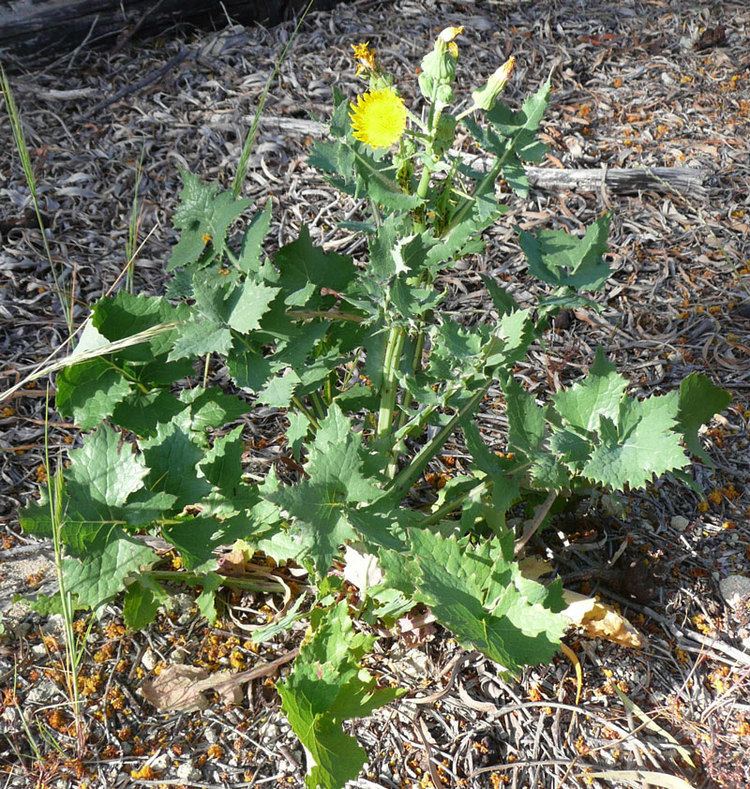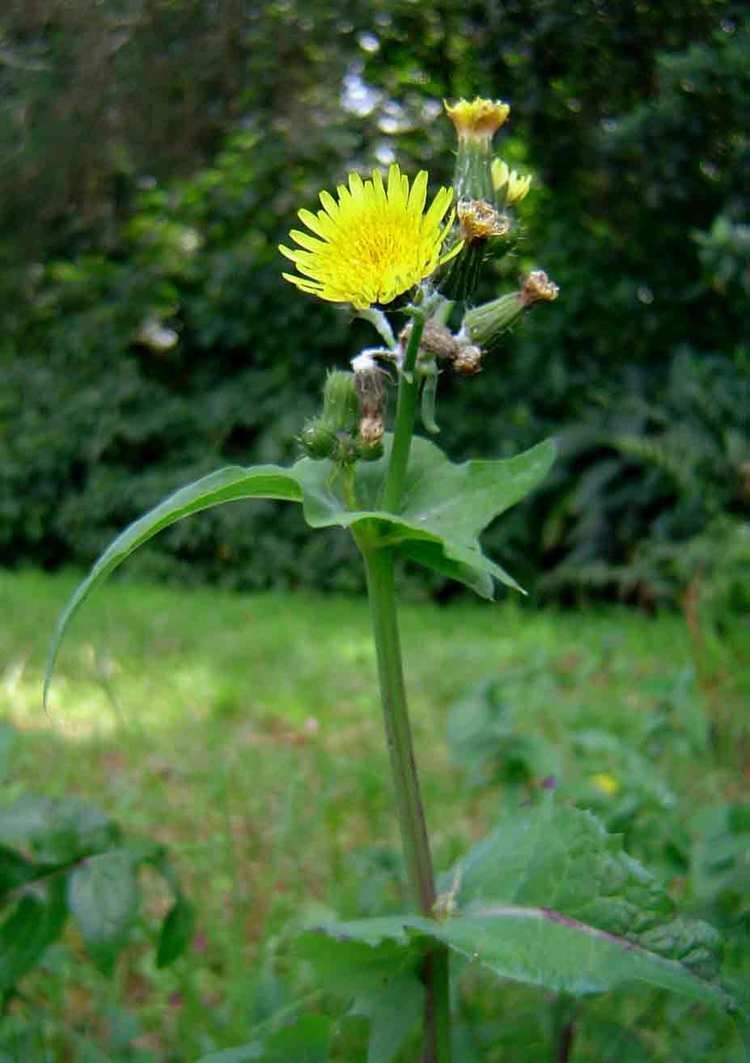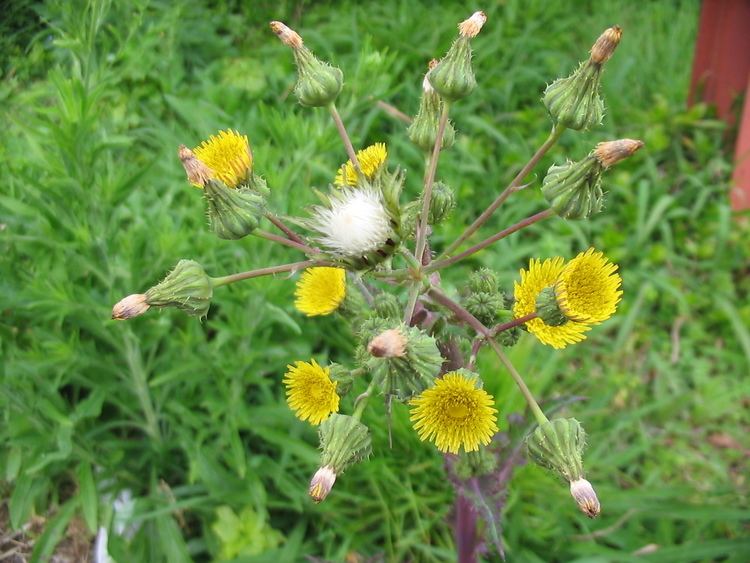Higher classification Sow thistles | Scientific name Sonchus oleraceus Rank Species | |
 | ||
Similar Sow thistles, Sonchus asper, Senecio vulgaris, Daisy family, Field Sow Thistle | ||
Sonchus oleraceus sow thistle pt 1 of 2
Sonchus oleraceus, with many common names including common sowthistle, sow thistle, smooth sow thistle, annual sow thistle, hare's colwort, hare's thistle, milky tassel, milk thistle, soft thistle, or swinies, is a plant in the dandelion tribe within the daisy family.
Contents
- Sonchus oleraceus sow thistle pt 1 of 2
- Common sow thistle sonchus oleraceus swinies 2012 06 17
- Botanical characteristics
- Nutritive qualities
- Herbalism
- Control
- References

Sonchus oleraceus is native to Europe and western Asia.
The scientific name Sonchus refers to the hollow stem, while oleraceus refers to its good taste. The common name sow thistle refers to its attractiveness to swine, and the similarity of the leaf to younger thistle plants. The common name hare's thistle refers to its purported beneficial effects on hare and rabbits.

Common sow thistle sonchus oleraceus swinies 2012 06 17
Botanical characteristics

This plant is annual herb with a hollow, upright stem of up to 30–100 cm high. Prefers full sun, and can tolerate most soil conditions. The flowers are hermaphroditic, and common pollinators include bees and flies. It spreads by seeds being carried by wind or water.

This plant is considered an invasive species in many parts of the world, where it is found mostly in disturbed areas. In Australia it is a common and widespread invasive species, with large infestations a serious problem in crops.
Nutritive qualities

Leaves are eaten as salad greens or cooked like spinach. This is one of the species used in Chinese cuisine as kŭcài (苦菜; lit. bitter vegetable). Blanching or boiling removes bitter flavour.
Nutritional analysis reveals 30 – 40 mg of vitamin C per 100g, 1.2% protein, 0.3% fat, 2.4% carbohydrate. Leaf dry weight analysis per 100g (likely to vary with growing conditions) shows: 45g Carbohydrate, 28g protein, 22g ash, 5.9g fibre, 4.5g fat; in all, providing 265 calories.
Minerals
Calcium: 1500 mg
Phosphorus: 500 mg
Iron: 45.6 mg
Magnesium: 0 mg
Sodium: 0 mg
Potassium: 0 mg
Zinc: 0 mg;
Vitamins
A: 35 mg
Thiamine (B1): 1.5 mg
Riboflavin (B2): 5 mg
Niacin: 5 mg
B6: 0 mg
C: 60 mg
Herbalism
Sonchus oleraceus has a variety of uses in herbalism. It also has been ascribed medicinal qualities similar to dandelion and succory.
Control
This plant can often be controlled by mowing, because it does not regrow from root fragments. Attempts at weed control by herbicide, to the neglect of other methods, may have led to proliferation of this species in some environments.
